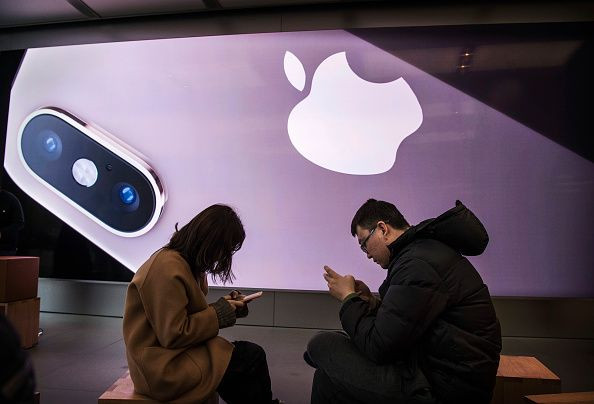IDC: Apple's iPhone Sales In China Are Getting Crushed

Investors already know that Apple (NASDAQ:AAPL) is facing major challenges in China, one of its biggest and most important markets. The company's fourth-quarter results showed its Greater China revenue fell 27% to $13.2 billion, and the company had been up front that weak iPhone sales in the Middle Kingdom were the most significant factor contributing to its shortfall. Apple does not break out iPhone revenue by geography, but total iPhone revenue was also down 15%.
We're now getting some third-party data that shows just how bad iPhone sales in China were last quarter.
iPhone unit volumes fell 20% in the fourth quarter
Market researcher IDC has just released some fresh estimates regarding the Chinese smartphone market, and they show the broader market is contracting. Unit volumes in China fell 10% to 103 million units, with local tech giant Huawei taking the No. 1 spot with 30 million units, up 23% from a year ago. That means Huawei was able to pick up share at its rivals' expense, with Apple and Xiaomi posting severe declines.
Here are the top five vendors for the fourth quarter.

Apple's premium prices, combined with modest product changes, contributed to its sluggish performance, particularly when competing with strong offerings from local rivals. Making matters worse, slowing macroeconomic growth is hurting consumer spending and making consumers more price-conscious. Apple underperformed the broader market by a factor of 2 in terms of unit shipments, losing share.
Cutting prices to spur sales
Despite ongoing headwinds, CEO Tim Cook has remained optimistic about Apple's long-term position in China. Echoing the company's global narrative, Cook said on the last earnings call that Apple enjoyed record services revenue in the December quarter, driven by the growing installed base:
We also continued to grow our total active installed base by adding new customers. In fact, more than two-thirds of all customers in China who bought a Mac or an iPad during the December quarter were purchasing that product for the first time. Finally, for perspective, despite the challenging December quarter, our revenue from China grew slightly for the full calendar year.
Wearables revenue in China was also up over 50%, although that segment is significantly smaller, so those gains don't come anywhere close to offsetting iPhone weakness. On the services side, China's temporary halt in new game approvals last year has also hurt Apple's business, Cook acknowledged.
Shortly after the quarter ended, Apple had started cutting iPhone prices in China in an effort to bolster demand, acknowledging that its high prices were hurting sales. The Mac maker is now attempting to absorb any foreign exchange movements in order to stabilize local prices. The strengthening U.S. dollar has led Apple to raise prices over the past year, further hurting demand.
This article originally appeared in the Motley Fool.
Evan Niu, CFA owns shares of Apple. The Motley Fool owns shares of and recommends Apple. The Motley Fool has the following options: long January 2020 $150 calls on Apple and short January 2020 $155 calls on Apple. The Motley Fool has a disclosure policy.





















